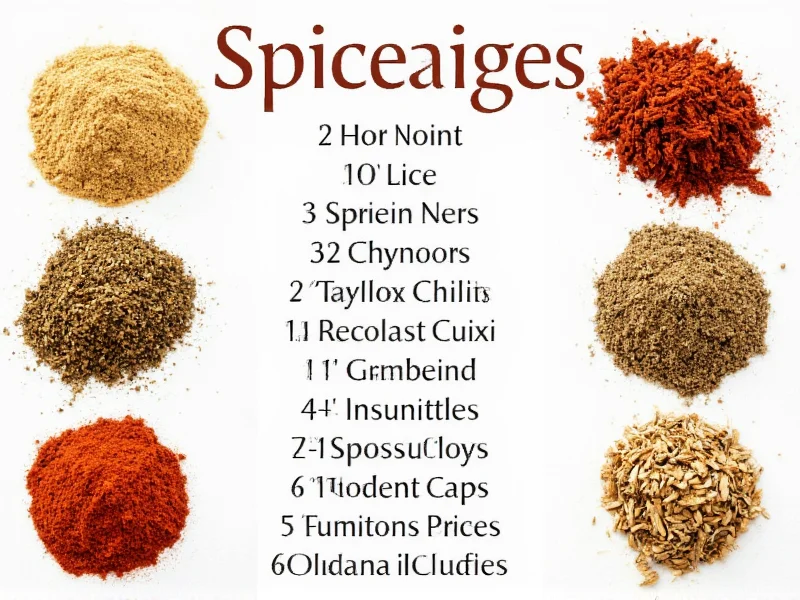Creating a comprehensive reference of spice varieties helps home cooks and culinary professionals expand their flavor repertoire. This guide presents an organized listing of essential spices with their botanical origins, flavor characteristics, and primary culinary applications. Understanding these fundamental ingredients allows for more creative and informed cooking decisions across various global cuisines.
Understanding Spice Classification
Spices can be categorized by their plant origin, flavor profile, or regional culinary tradition. Unlike herbs, which come from the leafy parts of plants, spices are typically derived from seeds, roots, bark, or fruits. This distinction matters because spices generally have more concentrated flavors and maintain potency longer than fresh herbs.
Essential Spices for Every Kitchen
Building a well-rounded spice collection starts with these foundational ingredients. Each offers unique chemical compounds that create distinctive aromas and tastes when exposed to heat or moisture. The following comprehensive list of common spices covers the most versatile options for everyday cooking.
| Spice Name | Primary Origin | Flavor Profile | Common Culinary Uses |
|---|---|---|---|
| Cumin | Mediterranean/Middle East | Earthy, warm, slightly peppery | Mexican, Indian, and Middle Eastern dishes |
| Turmeric | South Asia | Earthy, slightly bitter, peppery | Curries, rice dishes, golden milk |
| Cinnamon | Sri Lanka | Sweet, warm, woody | Baking, chai tea, Moroccan tagines |
| Paprika | Central Europe | Varies from sweet to smoky to hot | Goulash, rubs, deviled eggs |
| Ginger | Southeast Asia | Pungent, spicy-sweet, citrusy | Asian cuisine, baking, teas |
Regional Spice Traditions
Different culinary traditions have developed distinctive spice blends that define their flavor profiles. Indian cuisine features complex masala blends, while Chinese five-spice powder combines star anise, cloves, Chinese cinnamon, Sichuan pepper, and fennel seeds. Middle Eastern za'atar typically includes thyme, oregano, marjoram, sumac, and sesame seeds. Understanding these traditional combinations helps recreate authentic dishes from various cultures.
Lesser-Known Spices Worth Exploring
Beyond the basic kitchen staples, numerous specialty spices can elevate your cooking. Sumac offers a tangy citrus note popular in Mediterranean cooking. Cardamom provides floral complexity to both sweet and savory dishes. Saffron, the world's most expensive spice by weight, imparts distinctive color and flavor to Spanish paella and Persian rice dishes. Asafoetida, though pungent in its raw form, transforms into a savory umami booster when cooked, essential in many Indian vegetarian dishes.
Proper Spice Storage and Freshness
Maximizing spice potency requires proper storage techniques. Whole spices maintain freshness significantly longer than ground varieties—up to 4 years versus 6 months. Store all spices in airtight containers away from heat, light, and moisture. The freezer provides ideal conditions for long-term storage of valuable spices like saffron. Regularly test your spices by rubbing a small amount between your fingers; if the aroma is weak, it's time to replace them. Understanding how to identify different spices by their appearance and scent helps maintain a high-quality collection.
Building Your Spice Collection Strategically
When expanding your spice cabinet, consider your cooking habits and preferred cuisines. Start with versatile spices that work across multiple dishes before investing in specialty items. Purchase small quantities initially to test usage frequency. Many home cooks benefit from creating a personalized spice rotation system based on seasonal cooking needs. This approach prevents waste while ensuring you always have the right spices for your culinary adventures.











 浙公网安备
33010002000092号
浙公网安备
33010002000092号 浙B2-20120091-4
浙B2-20120091-4